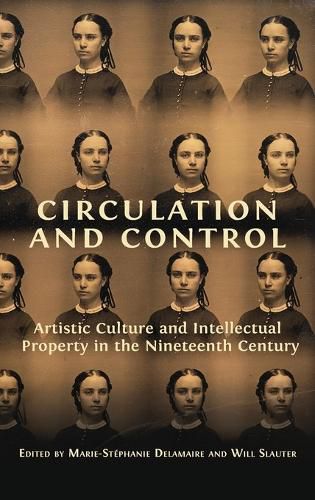Readings Newsletter
Become a Readings Member to make your shopping experience even easier.
Sign in or sign up for free!
You’re not far away from qualifying for FREE standard shipping within Australia
You’ve qualified for FREE standard shipping within Australia
The cart is loading…






This title is printed to order. This book may have been self-published. If so, we cannot guarantee the quality of the content. In the main most books will have gone through the editing process however some may not. We therefore suggest that you be aware of this before ordering this book. If in doubt check either the author or publisher’s details as we are unable to accept any returns unless they are faulty. Please contact us if you have any questions.
The nineteenth century witnessed a series of revolutions in the production and circulation of images. From lithographs and engraved reproductions of paintings to daguerreotypes, stereoscopic views, and mass-produced sculptures, works of visual art became available in a wider range of media than ever before. But the circulation and reproduction of artworks also raised new questions about the legal rights of painters, sculptors, engravers, photographers, architects, collectors, publishers, and subjects of representation (such as sitters in paintings or photographs). Copyright and patent laws tussled with informal cultural norms and business strategies as individuals and groups attempted to exert some degree of control over these visual creations.
With contributions by art historians, legal scholars, historians of publishing, and specialists of painting, photography, sculpture, and graphic arts, this rich collection of essays explores the relationship between intellectual property laws and the cultural, economic, and technological factors that transformed the pictorial landscape during the nineteenth century.
This book will be valuable reading for historians of art and visual culture; legal scholars who work on the history of copyright and patent law; and literary scholars and historians who work in the field of book history. It will also resonate with anyone interested in current debates about the circulation and control of images in our digital age.
$9.00 standard shipping within Australia
FREE standard shipping within Australia for orders over $100.00
Express & International shipping calculated at checkout
This title is printed to order. This book may have been self-published. If so, we cannot guarantee the quality of the content. In the main most books will have gone through the editing process however some may not. We therefore suggest that you be aware of this before ordering this book. If in doubt check either the author or publisher’s details as we are unable to accept any returns unless they are faulty. Please contact us if you have any questions.
The nineteenth century witnessed a series of revolutions in the production and circulation of images. From lithographs and engraved reproductions of paintings to daguerreotypes, stereoscopic views, and mass-produced sculptures, works of visual art became available in a wider range of media than ever before. But the circulation and reproduction of artworks also raised new questions about the legal rights of painters, sculptors, engravers, photographers, architects, collectors, publishers, and subjects of representation (such as sitters in paintings or photographs). Copyright and patent laws tussled with informal cultural norms and business strategies as individuals and groups attempted to exert some degree of control over these visual creations.
With contributions by art historians, legal scholars, historians of publishing, and specialists of painting, photography, sculpture, and graphic arts, this rich collection of essays explores the relationship between intellectual property laws and the cultural, economic, and technological factors that transformed the pictorial landscape during the nineteenth century.
This book will be valuable reading for historians of art and visual culture; legal scholars who work on the history of copyright and patent law; and literary scholars and historians who work in the field of book history. It will also resonate with anyone interested in current debates about the circulation and control of images in our digital age.